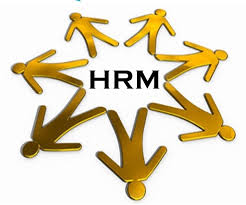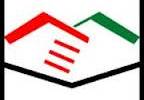General Concept of HRM:
HRM is the systematic planning, development and control of network of interrelated processes affection and involving all members of an organization. These processes include-
- HR planning & forecasting
- Job & work design
- Staffing / recruitment & selecting
- Training & development
- Performance appraisal & review
- Compensation & reward
- Employee protection & representation
- Organization improvement
Objectives of HRM:
The objectives of HRM can be described as follows-
- To hire the right person for the job
- To reduce employee turnover
- To motive people to perform at high effort levels
- To maintain a high morale & better human relations inside the organizational peace
- To maintain organizational peace
- To attract competent people and retain them in the organization
- To recognize and satisfy individual needs.
Basic Principles of HRM:
- Treat people with respect and dignity ;
- Deal with people as complete individuals ;
- Provide people with opportunities for growth and development ;
- Make people feel that they are most valuable asset for the organization ;
- Rewards should be earned, not given ;
- Provide people with all relevant information.
Approach of HRM:
Strategic approach
People are the strategic asset of an organization. People have core competency, the basis of competitive advantage.
Human resource approach
People are human beings with a lot of potentials and intellectual abilities.
Commodity approach
People are commodity. They are viewed as a cog of a machine.
Proactive Approach
Anticipate challenge of problem before they arise. Preventive is better than curative.
Philosophy of HRM:
(1) Labor is viewed as a technical factor of production. They are treated as a commodity and they can be bought and sold. They are hired and fired at will. It is consistent with theory X.
(2) Labor is viewed as human factor with a lot of positive potentials, so they must be treated with respect and dignity. This is consistent with theory Y of McGregor.
Standard Organgram of HR Department in a Large Organization:
In organization large to enough to have a HR or personal department, the personnel director Director and his or her staff will play a key role in the designing and monitoring of human resources system. Larger organizations are more likely to help design and implement HR system. A full- time Specialist tends to emerge when organizations have about one hundred employees.
Responsibilities of HR Department in Jamuna Bank Limited:
| Position | Responsibilities |
| VP, HR | Executive Committee, Organization Planning, HR Planning policy, Organization development |
| AVP, Recruitment & Employment | Recruiting, Interviewing, testing, Placement & Termination |
| AVP, Compensation & benefits | Job analysis and evaluation, surveys, performance appraisal, Compensation administration, Bonus, Profit Sharing Plans, Employee benefits. |
| AVP, Training & development | Orientation, Training, Management development, Career planning & Development. |
| AVP, Employee relations | EEO relations, Contract Compliance, Staff Assistance Programs, Employee Counseling. |
Concept of HR Planning & Forecasting:
HR planning is the first step in the recruiting and selection process. `Human Resource planning is the process of assessing the organization’s human resource needs in light of organizational goals and making plans to ensure that a competent stable workforce is employed ` –Wendell French.
`Personal planning is the process of deciding what positions the firm will have to fill, and how to fill them.’—Gary Dessler.
In the words of coleman bruce (1997) HRM is the process of determining manpower requirements and the means of meeting those requirements in order to carry out the integrated plan of the organization.
According to the above definitions, HRP consists of the following elements:
- Establishing and reorganizing the future job requirement;
- Identifying deficiency in terms of quantity;
- Identifying the deficiency in terms of quality & specification ;
- Identifying the sources of right type of man ;
- developing the available manpower and
- Ensuring the effective utilization of workforce.
Steps of HR planning:
HR planning is a process involving few stages:
(1) Integrate HR planning with corporate Planning the first stage of Hr planning is to integrate it with corporate planning. All manpower planning stems from business plans in relation to a corporate strategy.
(2) Forecasting internal & external environment:
The second stage in HR planning is to forecast of assess the internal and external environmental factors that affect demand and supply of labor. Environmental factors include government influences economic, geographic and competitive condition.
(3) Assessment of internal HR capabilities:
The next stage is the analysis of internal inventory of HR capabilities. Assessment of internal strengths and weakness as a part of HR planning requires the current job and employees capabilities are audited and organizational capabilities are inventoried.
(4) Predicting & forecasting HR demand and supply:
The information gathered from external environmental Scanning and assessment of internal strengths and weaknesses is used to predict of forecast HR supply and demand in light of organizational objectives and strategies.
(5) To locate the required HR:
Once the demand for HR has been forecasted, then their availability must be identified. The forth stage of HR planning is to locate the sources from where personnel required will be available. The source may be internal and external.
(6) Allocation of HR
The final stage o HRP is concerned with allocation o human resources within an organization over time.
HR Planning & the Strategic Planning Process:
HR planning should be an integral part of a firm’s strategic and HR planning process. The effective HR planning and strategic planning process is shown below:
Forecasting HR Needs:
When a firm makes a plan for employment requirements, the firm usually needs to forecast personal needs, the supply of inside & outside candidates. Different techniques like, trend analysis, ratio analysis, scatter plot can be used to estimate staffing needs.
Trend analysis
Trend analysis means studying variation in the firm’s employment levels over last five years.
The scatter plot
A scatter plot shows graphically how two variables; business activity and firm’s staffing levels are related. For example, a newly established bank, which has 20 branches, expects to expend to 57 branches over the next five years. The HR director wants to forecast the requirement of manpower. The director can analyze the relationship between size of another 5 well-reputed banks (in terms of number o branches) and their existing manpower.
Name of Banks | Size (number of Br.) | Existing manpower |
| Jamuna Bank | 57 | 1215 |
| Prime Bank | 41 | 1024 |
| NCC bank | 41 | 1000 |
| Exim bank | 28 | 934 |
| Standard Bank | 22 | 449 |
If the bank carefully draws in a line to minimize the distances between the line and each one of the plotted points, the bank will be able to estimate the optimum number of staff needed for each bank size. Thus, for a 57 branches bank, the HR director would assume he needs nearly 1215 staffs.
Ratio Analysis
A forecasting technique for determining future staff needs by using ratio between, for example, number of customers and employee needed.
Forecasting the Internal HR Supply:
Once the demand for labor is predicted, it is necessary to forecast the supply of labor that the organization will already have available to meet the demand. The internal supply of labor is constantly changing as new people enter and others resin, retire or are discharged. to predict the future supply the organization needs to maintain Management Inventory Human Resource Information System(HRIS).
Forecasting the External HR supply:
The firms can’t always get all the employees they need from their current staff and some time they just don’t want to. So, forecasting the availability of outside supply is extremely important in human resource planning. Because of the need for continuous and adequate staffing, every enterprise depends on the quality and quantity of human resources external to it.
Practices in the Bank:
The bank follows most of steps of HR planning i.e. integrate HR planning with corporate planning, assessment of internal HR capabilities and so on. Although they do not follow scatter plot and trend analysis, but they follow ratio analysis for forecasting future HR needs.
















